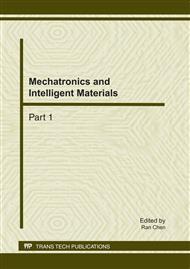p.195
p.200
p.205
p.209
p.213
p.217
p.222
p.227
p.231
Synthesis and Luminescent Properties of Eu3+ Doped Double Molybdate Phosphors
Abstract:
A series of trivalent europium (Eu3+) doped double molybdate phosphors (MLa(MoO4)2, M = Li, Na, K) have been prepared via traditional solid state reaction method at 500-800 °C. Their crystal structures and luminescent properties have been investigated, finding that the phosphors take on single phase through X-ray diffraction patterns (XRD) sintered at 600, 700 and 800 °C for lithium, soldium and potassium salt, respectively.Their excited spectra consist of a broad band and three absorptions, in which the higher peaks locate at 400 nm and 470 nm in the region of 350-500 nm. Excited with 470 nm, the emission spectra are composed of four narrow bands and the strongest emission peak is located at 615 nm. The appropriate doping concentration of Eu3+ was 10 mol% for the 615 nm emission. The results indicate that this Eu3+ activated NaLa(MoO4)2 phosphors are promising yellowish red phosphor for ultraviolet (UV) and blue InGaN-based white LED.
Info:
Periodical:
Pages:
213-216
Citation:
Online since:
February 2011
Authors:
Keywords:
Price:
Сopyright:
© 2011 Trans Tech Publications Ltd. All Rights Reserved
Share:
Citation:


